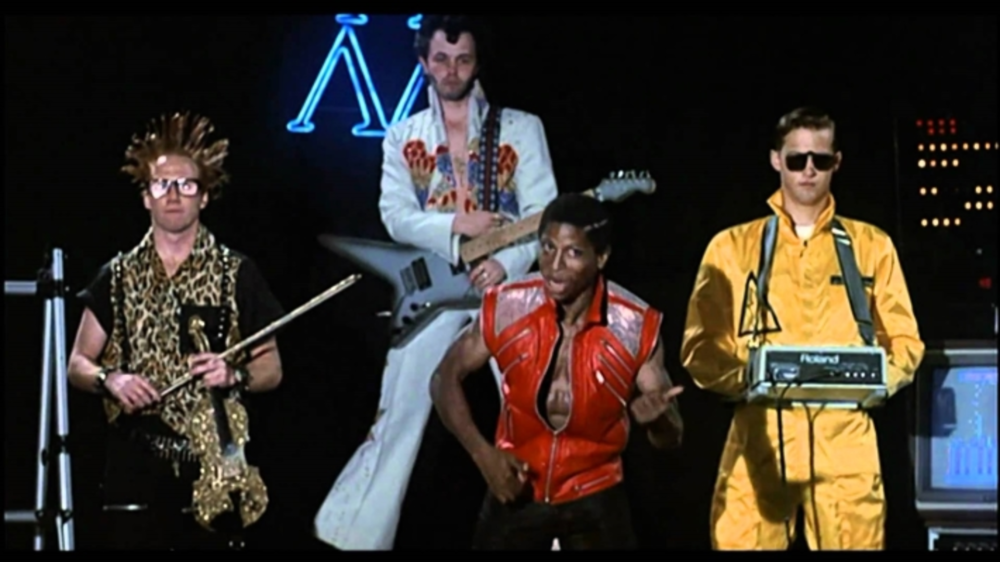Disney recently reported its last quarter as the most profitable in the company’s history. The company attributed this milestone to the otherworldly success of the latest Star Wars film, which recently crossed the $2 billion mark, just 50 days after its release. This is the manifestation of the revenge of the nerds. Nerds, geeks, super fans—whatever you want to call them (myself included)—came out in force (heh) to support this film, just as they did for The Avengers, and the other films in the highest-grossing-of-all-time pantheon.
“Right now, the highest grossing movies of all time are about spaceships, superheroes, wizards, and dinosaurs,” says Steve Patrizi, VP of marketing and revenue at popular image sharing and editing site Imgur. “There’s this large bucket of activity that was looked at as niche interest in the past. We’re seeing this group that was into things 10 years ago that are just now becoming mainstream. In many ways, their influence has been kind of underappreciated.”
Marketers are struggling to reach and engage this amorphous demographic. Consider: Nearly 50% of self-ascribed geeks planned to sit out on the Super Bowl, according to recent internal survey data from Imgur, which polled its heavily millennial, primarily geek audience for the figures. That’s half of one of the perhaps most surprisingly powerful consumer segments in the market that marketers are outright missing during one of the biggest marketing opportunities of the year—to say nothing of the rest of the year. Marketers have a very real challenge here in engaging this community, but that work can’t properly begin until marketers understand why this group is so influential, the major challenges in engaging this segment, and what solutions exist.
They’re ambiguous
Millennials have been touted as the largest and most diverse generation. Naturally, a subgroup within that demographic has a high chance of having a similarly diverse makeup. Normally, this diversity is a good, even beautiful thing. But, when you factor in multiple and varying levels of interest in a given topic—such as technology, science fiction, comic books, or video games—you can easily end up with a rather elastic segment of consumers. This adds a layer of enormous complexity to targeting, which can discourage marketers from attempting to better understand the larger geek community. It’s an understandable impulse, but risks pale in comparison to the benefits of tapping such a potentially profitable and influential group.
“There’s a big opportunity to understand this demographic better,” Patrizi says. “Clearly, they are influential. There’s a very real possibility that the things they’re into today could be a part of the mainstream in 10 years. It’s important for brands to understand as much as they can about this audience.”
They’re empowered by the Web
This is true for most consumer groups, sure. But, the Internet has proven itself a breeding ground for various micro-communities filled with passionate enthusiasts. Many of these mini-groups orbit the larger interests of geeks and nerds, each with its own set of colloquialisms and culture.
“The Internet has created the perfect communication tool for the geek culture enthusiasts,” Patrizi says. “In a pure social context [geeks] may be a minority, but the Internet has made it possible for them to connect with all the other people who share these interests.”
They’ll reward relevance with engagement
“There’s a lot of talk about native advertising, but that conversation tends to be about the format of the ad. That’s important, but the bigger opportunity is being native to the audience,” Patrizi explains.
This is where marketers can significantly improve relations with us geeks. When you understand how complex this group is, how we relish in the Web, and how we cherish our digital communities, the solution to the engagement challenge starts looking familiar to any marketer who has monitored the boom in content marketing and native advertising. This is already a thing. What marketers can and must do is approach these types of consumers on their terms. Understand the norms in their community. Understand their humor, the subjects of their inside jokes, their language.
“Just like you wouldn’t take marketing for one geography and transplant that messaging the same way to another geography, you have to localize messaging for the [enthusiast] market you’re targeting,” Patrizi says.
“This is a well educated audience,” he adds. “They grew up with technology. They tend to be skeptical of marketing. It takes a different approach to reach [them]. It takes is understanding that audience and what makes them tick. Do that and they will reward you—not just with their engagement, but by asking you to advertise more.”








